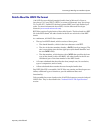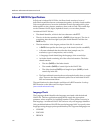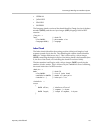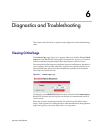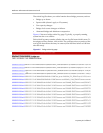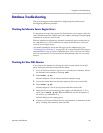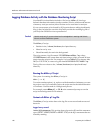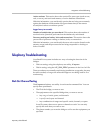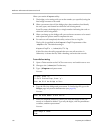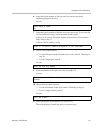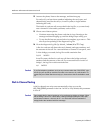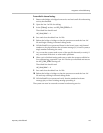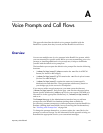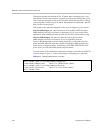
Diagnostics and Troubleshooting
Proprietary & Confidential 149
Active sessions: This section shows the session IDs, user types (such as root,
web, or cnow), and total used memory of active database connections.
With this information, you can identify queries that are being run constantly
against the database and determine the approximate time (to the nearest
second) that it takes to run these queries.
Logged every ten seconds:
Number of reads/writes per user thread: This section shows the number of
read and write operations performed on the database by each thread.
Processes waiting on latches, locks and transactions: This section shows the
process IDs of processes waiting on latches, locks, or transactions.
With this information, you can identify the most active session (based on the
memory usage) and the processes that are being suspended or waiting on
locks or latches.
Telephony Troubleshooting
Your ReadiVoice system includes two ways of testing the function of the
bridges:
• Dial-out testing, using the telephony test utility,
diagnose
.
• Dial-in testing, using the
LOG_CHAN_DEBUG
parameter in the
ive.ini
file.
These procedures are normally used during installation or upgrades, but may
be run as needed, as long as the affected bridges are not being used for live
conferencing.
Dial-Out Channel Testing
The
diagnose
telephony test utility is run from the command line. You can
specify these parameters:
• The ID of the bridge you want to test.
• The equipment on the specified bridge that you want to test as:
— Any range of cards, spans, and channels.
— A specific card, span, and channel.
— Any combination of ranges and specific cards, channels, or spans.
In an IP system, there are no spans or channels as such. You can only
specify the cards that you want to test.
• The phone number you want the bridge to call to test the equipment you
specified.



